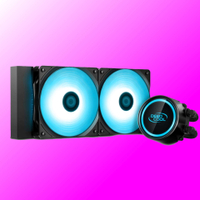Assassin's Creed Mirage will support DLSS and FSR after all
Not just XeSS.

A couple of days back, the system requirements for Assassin's Creed Mirage were revealed. The recommended requirements are quite reasonable, with pretty much any six-core CPU and GTX 1660 Ti / RX 5600 XT tier graphics card able to run the game at 60 FPS and 1080p with high settings.
One thing that caught our eye was the mention of XeSS upscaling support, but not Nvidia's DLSS or AMD's FSR. Ubisoft has put that to bed though, with an updated blog post that confirms Assassin's Creed Mirage will support DLSS, FSR, and XeSS.
So everybody wins, the way it should be. The last thing we need is repeated instances of one or more vendors being left out in the cold. Starfield is a prominent recent example, which launched with only FSR support.
Even though Assassin's Creed Mirage won't require a high end rig to enjoy, a little bit of upscaling will help those who have older machines, or those struggling to hit a nice smooth FPS at a given setting and resolution.
Assassin's Creed Mirage supports ultrawide setups, HDR, and has an uncapped frame rate, not to mention support for a haptic feedback vest, for those masochists who want to feel an axe to the gut.
Assassin's Creed Mirage is set in 9th century Baghdad and is said to be something of a return to the roots of the series, emphasizing stealthy gameplay over the RPG elements of later installments. It'll set you back $50 and no matter if you own an Nvidia, AMD or Intel graphics card, you'll be able to enjoy it with upscaling tech after it launches on October 5.
Best AIO cooler for CPUs: Keep your chip chill.
Best air cooler for CPUs: Classic, quiet cooling.
The biggest gaming news, reviews and hardware deals
Keep up to date with the most important stories and the best deals, as picked by the PC Gamer team.

Chris' gaming experiences go back to the mid-nineties when he conned his parents into buying an 'educational PC' that was conveniently overpowered to play Doom and Tie Fighter. He developed a love of extreme overclocking that destroyed his savings despite the cheaper hardware on offer via his job at a PC store. To afford more LN2 he began moonlighting as a reviewer for VR-Zone before jumping the fence to work for MSI Australia. Since then, he's gone back to journalism, enthusiastically reviewing the latest and greatest components for PC & Tech Authority, PC Powerplay and currently Australian Personal Computer magazine and PC Gamer. Chris still puts far too many hours into Borderlands 3, always striving to become a more efficient killer.
Most Popular






